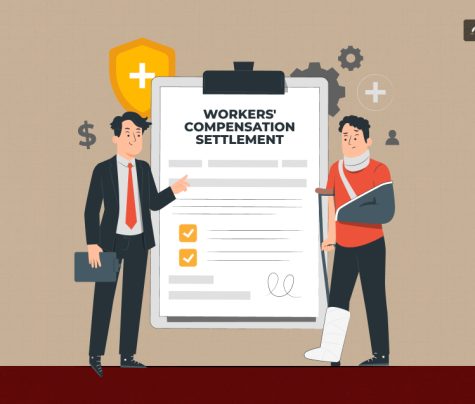
If you’re an hourly employee, you might wonder what happens if you get injured at work. Do you qualify for workers compensation payments? How much will it cover, and what should you expect during the workers’ comp claims process?
Our complete guide answers these important questions and clarifies the rights and benefits available to hourly employees under workers’ compensation laws.
Throughout the article, I will explain how the workers’ compensation system works, including coverage types, benefit calculations, and filing steps.
Whether you want to understand premium costs or know when to consult a workers’ compensation lawyer, I will provide the practical advice you need.
Keep reading to learn how workers’ compensation can protect your income and guide you through recovery.
Introduction to Workers Compensation Payments

Workers’ compensation is a state-regulated insurance system providing financial support to employees injured or diagnosed with work-related illnesses.
Ensuring wage replacement and covering medical expenses helps protect employers and employees from the financial impact of workplace injuries.
How Workers’ Compensation Works
When an employee is hurt at work, they have to notify their employer, who will subsequently submit a claim to their insurance company.
After getting approval, they pay the benefits according to the extent of the injury; these payments cover medical expenses and a portion of lost wages.
Employers pay the workers’ compensation insurance premiums. They determine these by payroll and risk variables.
What Does Workers’ Compensation Cover?
Workers’ compensation payments provide workers with crucial financial security by paying for a range of costs related to illnesses or injuries sustained on the job.
The following are typical types of workers’ compensation coverage provided, while precise benefits differ by state:
- Medical Costs: These include prescription drugs, physical treatment, doctor visits, and operations.
- Rehabilitation Services: Include physical treatment or vocational training to assist workers in getting back to work.
- Wage Replacement: This is a fraction of lost revenue resulting from a temporary or permanent inability to work.
- Disability Benefits: Payment for short-term or long-term impairments brought on by accidents at work.
- Death Benefits: Money given to surviving family members in the event of a fatality at work.
Types of Workers’ Compensation Benefits
Different types of workers ‘ compensation benefits may be available depending on the severity and duration of an employee’s injury.
These benefits fall into four main categories: temporary total disability, temporary partial disability, permanent total disability, and permanent partial disability.
Temporary Total Disability
Temporary total disability (TTD) benefits apply when an employee cannot work for a limited period due to a workplace injury.
For example, if a construction worker breaks their leg on the job and needs time off to heal completely, TTD benefits will help replace lost wages during recovery. Once the employee is able to return to work, these payments stop.
Temporary Partial Disability
Temporary partial disability (TPD) benefits are for employees who can return to work with reduced capacity, such as working fewer hours or performing lighter duties.
An example would be a retail employee recovering from a shoulder injury who can only handle administrative tasks instead of lifting heavy merchandise. In this case, TPD benefits make up part of the lost income due to reduced work hours.
Permanent Total Disability
PTD or permanent total disability benefits are provided to employees who cannot return to work due to injury.
A serious spinal injury that permanently prevents a factory worker from performing any job duties is an example of a condition qualifying for PTD.
These benefits often continue for life or until the employee reaches retirement age.
Permanent Partial Disability
Permanent partial disability (PPD) benefits apply when an employee sustains a lasting impairment but can still perform some work.
For instance, an office worker who loses partial use of their hand might be eligible for PPD compensation while continuing to work in a modified role.
The amount of compensation depends on the degree of impairment and how it affects their ability to earn wages.
Workers Compensation Payments: How to Calculate Them?
Workers’ compensation payments are generally based on a percentage of the employee’s average weekly wage (AWW) before the injury.
Most states use a range of 60% to 66%, meaning an injured hourly worker earning $800 per week might receive around $480 to $530 per week in benefits.
Payments also depend on the type of disability—temporary or permanent—and any applicable caps set by state laws.
Additionally, certain benefits, such as medical expenses, are paid separately without deducting from wage replacement benefits.
How to Calculate the Workers’ Compensation Premium
Either the insurance company or the employers calculate the workers’ compensation premiums. But how?
They do this by multiplying an employer’s payroll by a rate determined by the industry’s risk classification and adjusting for claims history.
For example, higher-risk industries like construction have higher rates than lower-risk office jobs.
If an employer has $100,000 in payroll and a $1.20 per $100 rate, the base premium would be $1,200. Employers may also receive discounts or surcharges based on their safety record and past claims.
Who Needs Workers’ Compensation Coverage?
Most employers are legally required to carry workers’ compensation insurance to protect employees from the financial burden of work-related injuries.
This includes businesses with hourly employees, regardless of whether they operate in high-risk industries like construction or lower-risk environments like retail.
Even part-time employees are generally eligible for workers’ comp coverage if they suffer an on-the-job injury. Although regulations vary by state, failing to provide coverage can lead to significant penalties for employers, including fines and potential lawsuits.
Cost of Workers’ Compensation Insurance
Workers’ compensation insurance costs depend on the employer’s industry, payroll size, and workers’ comp claims history.
High-risk jobs, such as manufacturing or healthcare roles, tend to have higher premiums due to the greater likelihood of workplace injuries than office jobs.
For example, an employer with a good safety record may qualify for lower premiums through experience modifiers. Employers also have the option to work with private insurers or state-funded programs, which can impact costs depending on the coverage plan.
How Long Does Receiving Workers’ Compensation Benefits Take?
In most states, workers’ comp benefits begin immediately after an injury once treatment is provided.
Wage replacement benefits, however, typically start within 7 to 21 days after the claim is approved, depending on state regulations.
If there are complications, such as missing documentation or the need for further investigation, the process may take longer.
Clear communication with your employer and insurer can help prevent unnecessary delays and speed up benefit approval.
Common Mistakes When Filing Workers’ Compensation Claims
Filing a workers’ compensation claim can be complex. Additionally, small errors may lead to delays or even denial of financial benefits.
Avoid these common mistakes by understanding the workers’ comp claims process and your rights as an employee:
- Failing to report the injury promptly: Delayed reporting can raise doubts about the claim’s validity and may result in denial.
- Inaccurate or incomplete documentation: Missing incident reports,’ or medical records’ details can slow down claim processing.
- Ignoring medical advice: Failing to follow prescribed treatment can reduce or terminate benefits, as it may signal a lack of genuine effort to recover.
- Missing deadlines: Each state has specific deadlines for reporting injuries and filing claims, and missing them can result in loss of benefits.
- Not seeking legal help when necessary: If your claim is denied or disputed, consulting a workers’ compensation lawyer can improve your chances of a successful appeal.
Workers’ Compensation for Hourly vs. Salaried Employees
Workers’ compensation covers hourly and salaried employees, but how benefits are calculated can differ. Hourly employee benefits are based on their actual earnings during the period leading up to the injury.
For example, a retail worker earning $15 per hour and averaging 40 hours per week would receive wage replacement based on their hourly rate and work schedule.
In contrast, salaried employees receive benefits based on their annual salary divided into weekly amounts. If a salaried manager earning $60,000 annually is injured, their weekly compensation would reflect their fixed income, regardless of overtime or bonuses.
Workers’ Compensation Payments: Questions People Also Ask
Now that you are almost done reading this blog, it is time for you to learn about some of the other questions that people often ask about workers’ compensation payments. So, read on before you leave this page!
What Types Of Injuries Are Typically Not Covered By Workers’ Compensation?
Workers’ compensation generally does not cover injuries outside the scope of employment, such as those sustained while commuting or during personal activities at work.
Additionally, claims may be denied if the injury resulted from employee misconduct, such as being under the influence of alcohol or drugs.
Can An Independent Contractor Qualify For Workers’ Compensation Benefits?
Independent contractors typically do not qualify for workers’ compensation benefits because they are not considered employees under most state laws.
However, if a contractor is misclassified and legally qualifies as an employee, they may be entitled to benefits.
What Happens If An Employer Does Not Carry Workers’ Compensation Insurance As Required?
Employers without mandatory workers’ compensation insurance can face significant legal penalties, including fines and potential criminal charges.
Injured employees may also sue the employer directly for damages, which could result in higher costs for the business.
How Does Workers’ Compensation Handle Pre-Existing Conditions Aggravated By A Workplace Injury?
Workers’ compensation may cover pre-existing conditions if the workplace incident aggravated or worsened the condition.
For example, if an employee with a previous back injury suffers additional damage while lifting heavy objects, they could be eligible for benefits.
Pat Baker is a workers’ rights advocate, is frequently injured, and writes for workers’ compensation lawyers in the Philadelphia area.
Read Also:
- How Long-Term Disability Insurance Covers Chronic Diseases?
- Common Types of Employment Contracts and Their Implications
- Having an Employment Law Attorney is a Blessing During THESE Times!










0 Reply
No comments yet.